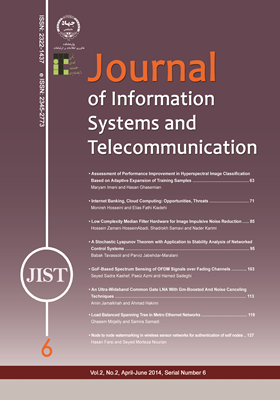Node to Node Watermarking in Wireless Sensor Networks for Authentication of Self Nodes
محورهای موضوعی : Wireless Network
Hassan Farsi
1
![]() ,
Seyed Morteza Nourian
2
,
Seyed Morteza Nourian
2
1 - Birjand University
2 - Birjand University
کلید واژه: Watermarking, Wireless Sensor Network, Packets Head, Node, Information Security,
چکیده مقاله :
In order to solve some security issues in Wireless Sensor Networks (WSNs), node to node authentication method based on digital watermarking technique for verification of relative nodes is proposed. In the proposed method, some algorithms with low computational for generation, embedding and detection of security ID are designed. The collected data packets by the nodes are marked using security ID. In the proposed method, header is used to mark the packets. Since the nature of the sensor networks is cooperative, using the head of the packets is proposed for authentication. Also using the marked head can prevent from sending and receiving fake data in the other nodes. Simulations have been performed in environments with imposing unrealistic data and having a probability from 1% to 10%. Comparing the proposed method with other methods shows that the proposed method in term of security, reducing traffic and increasing network lifetime is more effective.
In order to solve some security issues in Wireless Sensor Networks (WSNs), node to node authentication method based on digital watermarking technique for verification of relative nodes is proposed. In the proposed method, some algorithms with low computational for generation, embedding and detection of security ID are designed. The collected data packets by the nodes are marked using security ID. In the proposed method, header is used to mark the packets. Since the nature of the sensor networks is cooperative, using the head of the packets is proposed for authentication. Also using the marked head can prevent from sending and receiving fake data in the other nodes. Simulations have been performed in environments with imposing unrealistic data and having a probability from 1% to 10%. Comparing the proposed method with other methods shows that the proposed method in term of security, reducing traffic and increasing network lifetime is more effective.


